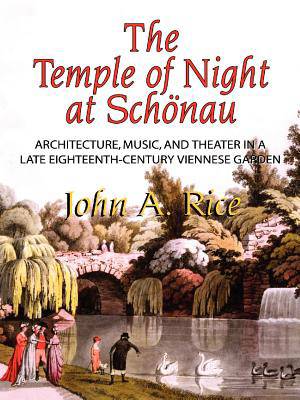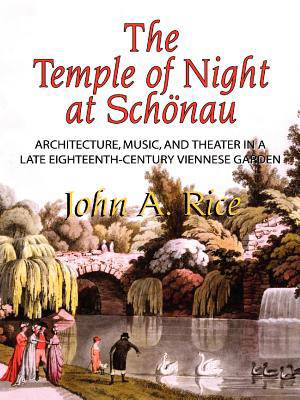
- Afhalen na 1 uur in een winkel met voorraad
- Gratis thuislevering in België vanaf € 30
- Ruim aanbod met 7 miljoen producten
- Afhalen na 1 uur in een winkel met voorraad
- Gratis thuislevering in België vanaf € 30
- Ruim aanbod met 7 miljoen producten
Zoeken
Temple of Night at Schonau
Architecture, Music, and Theater in a Late Eighteenth-Century Viennese Garden, Memoirs, American Philosophical Society (Vol. 258)
John A Rice
€ 86,45
+ 172 punten
Omschrijving
Between 1796 and 1800 Baron Peter von Braun, a rich businessman and manager of Vienna's court theaters, transformed his estate at Schönau into an English-style landscape park. Among several buildings with which he embellished his garden, the most remarkable and celebrated was the Temple of Night, a domed rotunda accessible only through a meandering rockwork grotto that led visitors to believe that their destination lay somewhere deep underground. A life-size statue of the goddess Night on a chariot pulled by two horses presided over the Temple, while from the dome, which depicted the night sky, came the sounds of a mechanical musical instrument that visitors likened to music of the spheres. Only the ruins of the Temple of Night survive, and it has received little scholarly attention. This book brings it back to life by assembling the many descriptions of it by early nineteenth-century eyewitnesses. Placing the Temple within the context of the eighteenth-century English landscape park and of Viennese culture in the fascinating period of transition between Enlightenment and Biedermeier, Rice's book will appeal to anyone interested in the history of garden design, architecture, theater, and music.
Specificaties
Betrokkenen
- Auteur(s):
- Uitgeverij:
Inhoud
- Aantal bladzijden:
- 257
- Taal:
- Engels
- Reeks:
Eigenschappen
- Productcode (EAN):
- 9780871692580
- Verschijningsdatum:
- 1/01/2006
- Uitvoering:
- Paperback
- Formaat:
- Trade paperback (VS)
- Afmetingen:
- 210 mm x 279 mm
- Gewicht:
- 625 g

Alleen bij Standaard Boekhandel
+ 172 punten op je klantenkaart van Standaard Boekhandel
Beoordelingen
We publiceren alleen reviews die voldoen aan de voorwaarden voor reviews. Bekijk onze voorwaarden voor reviews.











